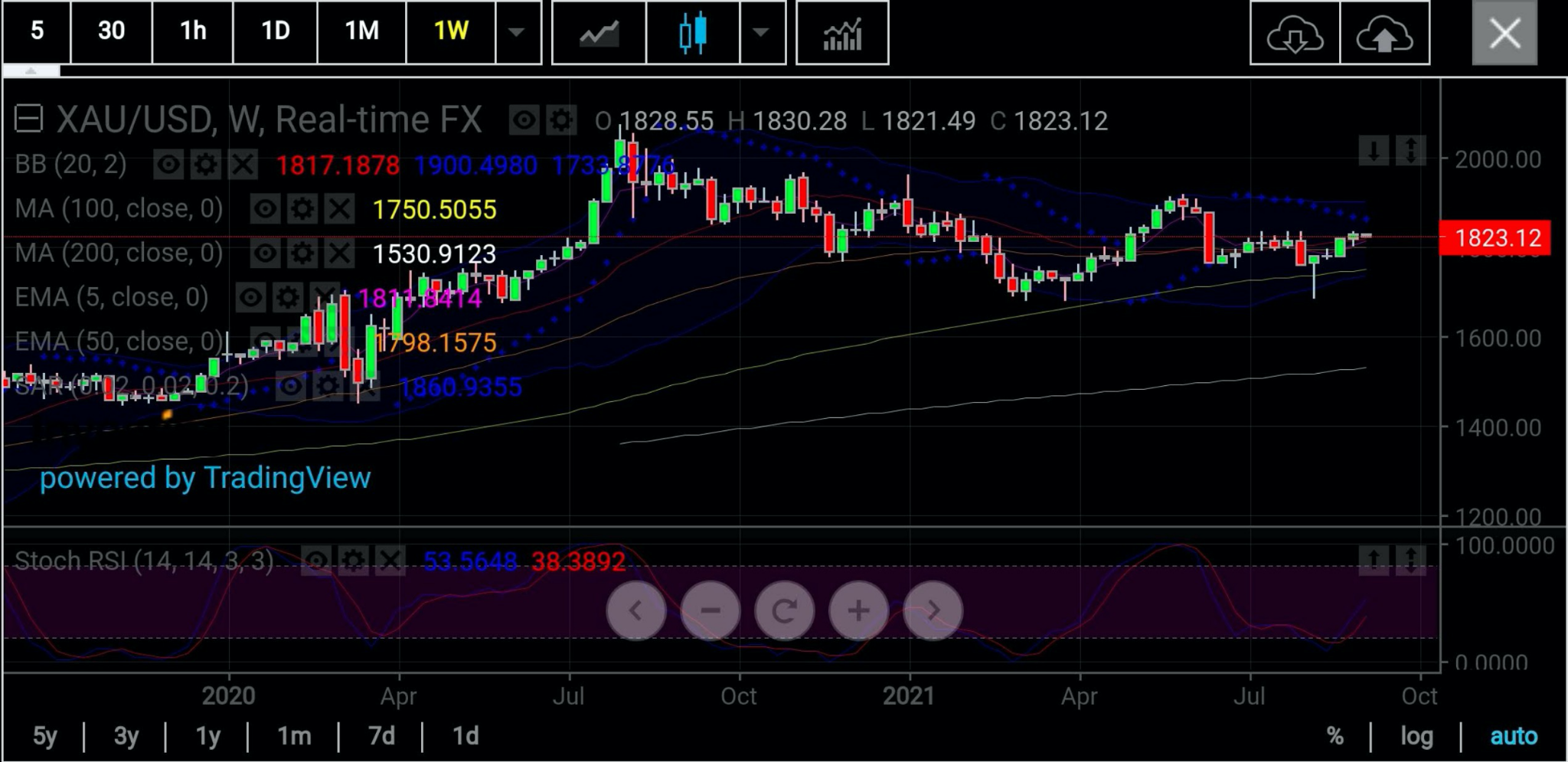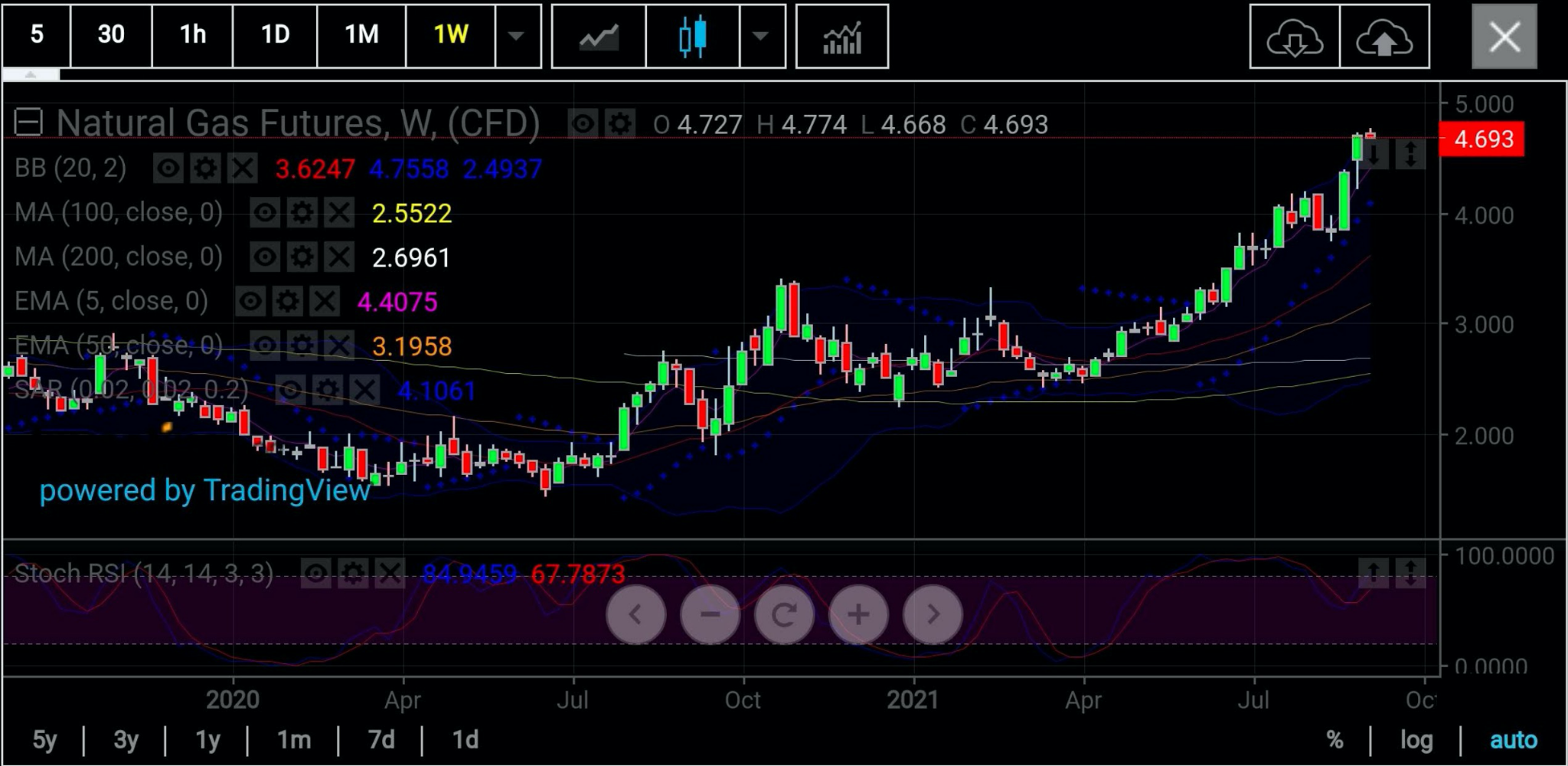After weeks of rallies, gold, oil and natural gas enter an inflection phase as the dollar's downward move might pause after its recent battering.
The greenback was trying to claw to steady ground in Tuesday’s noon trading in Asia despite an abysmal US August jobs report from Friday that some think may have been “good under the circumstances”.
The August jobs report came in at 235,000, almost 70% below the targeted number of 733,000. Despite that, the unemployment rate fell by 0.2 percentage points to 5.2%. That was a consolation for the Fed, which has been waiting for almost two years now to bring the jobless rate back to 4% or under—its target for full employment.
Still, few expect the central bank to go anywhere near to tapering its monthly bond and other asset buying of $120 billion, on since the COVID outbreak of March 2020.
Prior to the August job report, there had been rife speculation that the Fed might be ready to announce a pullback in its lifeline to the economy. The monthly stimulus aside, the central bank has also been keeping interest rates at virtually zero over the past 18 months.
The Fed’s Federal Open Market Committee, or FOMC, meets Sept. 21-22 to decide on rates and other policy matters. No one in the right sense of mind expects the FOMC to be hawkish enough to call for a taper or rate hike at this point, with COVID’s Delta variant threatening so many different risks to the economy.
Both the reserve banks of Australia and Canada are on schedule to delay their stimulus tapers this week, lending a floor to the dollar.

All charts courtesy of SK Charting
Gold was down on Tuesday morning in Asia but remained above the $1,800 mark.
Technical analyst Sunil Kumar Dixit of Kolkata, India-based SK Charting says gold could have hit a ceiling for now, adding:
“The $1,825-1,835 range appears to be acting as a resistance zone for gold.”
“As long as gold sustains below its $1,825 Fibonacci level and under $1,826, which is its previous week' closing, sellers will try to keep it suppressed and retest the $1,818 middle Bollinger Band.”
Dixit said gold sellers would also be focused on $1811—which is the 5-week Exponential Moving Average—and $1,798, which is the confluence of 50-week EMA and 50% Fibonacci level.
He added:
“In reverse, consolidation above the 50-week EMA of $1,798 can work as energy for gold’s next leg higher, aiming for $1,860, which is the 23.6% Fibonacci level before testing the $1,900 handle. The Stochastic RSI, or Relative Strength Indicator, reading of 53/38 also gives enough room for volatility.”

On the oil front, crude prices were wobbly as investors grappled with demand concerns after Saudi Arabia's sharp cuts to crude contract prices for Asia.
New York-traded WTI, or West Texas Intermediate, the benchmark for US oil, was down 17 cents, or 0.3%, at $69.12 per barrel. Last week, WTI rose 0.8%.
London-traded Brent crude, the global benchmark for oil, meanwhile, rose 31 cents, or 0.4%, to $72.53 per barrel. In the just-ended week, Brent lost 0.1%.
Says Dixit:
“Weakness below $68.30 can push WTI down to $67.30 and extend that to $65.38."
Failure for US crude to hold above $65.38 can trigger a steep selloff, exposing the 50 week EMA of $59.70, he said.
On the flip side, momentum buying above $69.30 could help oil surpass the previous week's high of $70.75 and extend its rally to $72.50, Dixit added.
“However, reclaiming higher areas of $74.50 may be a tough nut to crack and to reach $77 per barrel would require an unleashing of strong fundamentals.”

In natural gas, the most active October contract on the Henry Hub settled up for a fourth day in a row, finishing at $4.697 per mmBtu, or million metric British thermal units. For the week, the spot gas contract gained almost 8% after the previous week’s 13.5% surge.
Gas prices have been on a tear since the year began, with March being the only exception, from weather extremities and underwhelming production.
Last week, the rally reached new highs as Hurricane Ida shut down 85% of gas production facilities on the Gulf of Mexico prior to making its landfall. In the aftermath of the storm, some production remained shut and could take time to resume due to flooding and other carnage caused by the storm.
Gas prices are already up 86% on the year, with analysts estimating they could reach $5 per mmBtu next.
Dixit said the rally in gas has been consistent and holding to the strong side of the 5-week EMA of $4.40, adding affirmation that futures on Henry Hub may not be willing to give up before retesting the 2018 high of $4.93 to be conservative.
“This bull run is further supported by weekly Stochastic RSI reading of 85/68."
However, as commonly witnessed in any bull market, prices may pause for a while. Shorter time frame charts show signs of exhaustion and an overbought scenario that could prompt some consolidation below $4.40, pushing prices to $4.20 and $3.98.”
Disclaimer: Barani Krishnan uses a range of views outside his own to bring diversity to his analysis of any market. For neutrality, he sometimes presents contrarian views and market variables. He does not hold a position in the commodities and securities he writes about.
